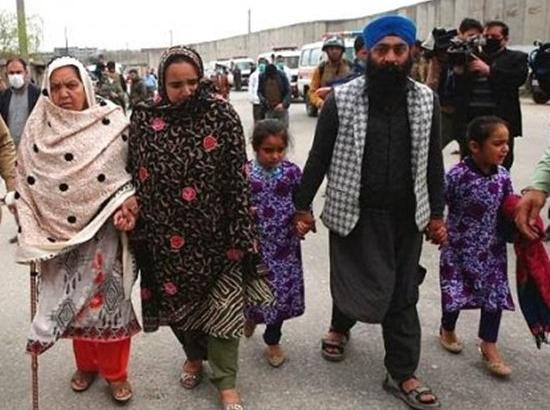
An IAF chopper flies over Leh in Ladakh on Monday. PTI
Ajay Banerjee
Tribune News Service
New Delhi, June 29
Last meet decided on keeping distance
- A minimum distance was specified and agreed upon at June 22 meeting
- With no demarcation of LAC, the meeting laid stress on troops of either side remaining at least 2.5 to 3 km apart
Chinese buildup
- The present friction is also because the PLA pulled back a bit and then returned to build up again at the Galwan valley and Hot Springs
With negligible “disengagement” by Indian and Chinese troops from the Line of Actual Control (LAC) in Ladakh, Lt General-level Commanders will meet again at 11 am on Tuesday.
A minimum physical separation had been specified for the Indian Army and the People’s Liberation Army (PLA) of China at a similar meeting of Commanders on June 22. So far, there has been very slow progress and the physical separation has been partially met at just two points along the 826-km-long LAC, sources said. At several other places, gun-toting troops remain within firing range of each other.
A minimum distance, based on geographical features of the mountains, had been specified and agreed upon at the June 22 meeting. Since there is no demarcation of the LAC on the ground, the specified distance was to be such that troops of either side remained at least 2.5 to 3 km apart. The present friction is also because the PLA pulled back a bit and then returned to build up again at certain areas, including the Galwan valley and Hot Springs, which The Tribune had reported in its edition dated June 25.
Also read: Enhanced airlift capability key to India’s LAC buildup
Keeping physical distance is part of the targeted “baby steps” as both the nuclear-armed neighbours have amassed huge inventories of heavy weapons, artillery, tanks and fighter jets. Rolling back all these would be a long-drawn “mutual disengagement” process along the LAC.
Physical distance was specified to ensure that no Galwan-type clash would take place again. In a deadly clash on the night of June 15, 20 Indian troops were killed in action while an unspecified number of PLA men were killed. China has also moved in massive air defence equipment along the LAC to counter Indian missiles, drones, fighter jets and other airborne platforms. Indian strength is adequate in Ladakh, matching China’s with guns, tanks and airborne platforms.
The meeting tomorrow will be at Chushul, the designated meeting point on the Indian side. So far, both meetings (on June 6 and June 22) have been conducted on the Chinese side at Moldo. Since June 22, there have been no meetings lower than those conducted by Lt Generals.













































































